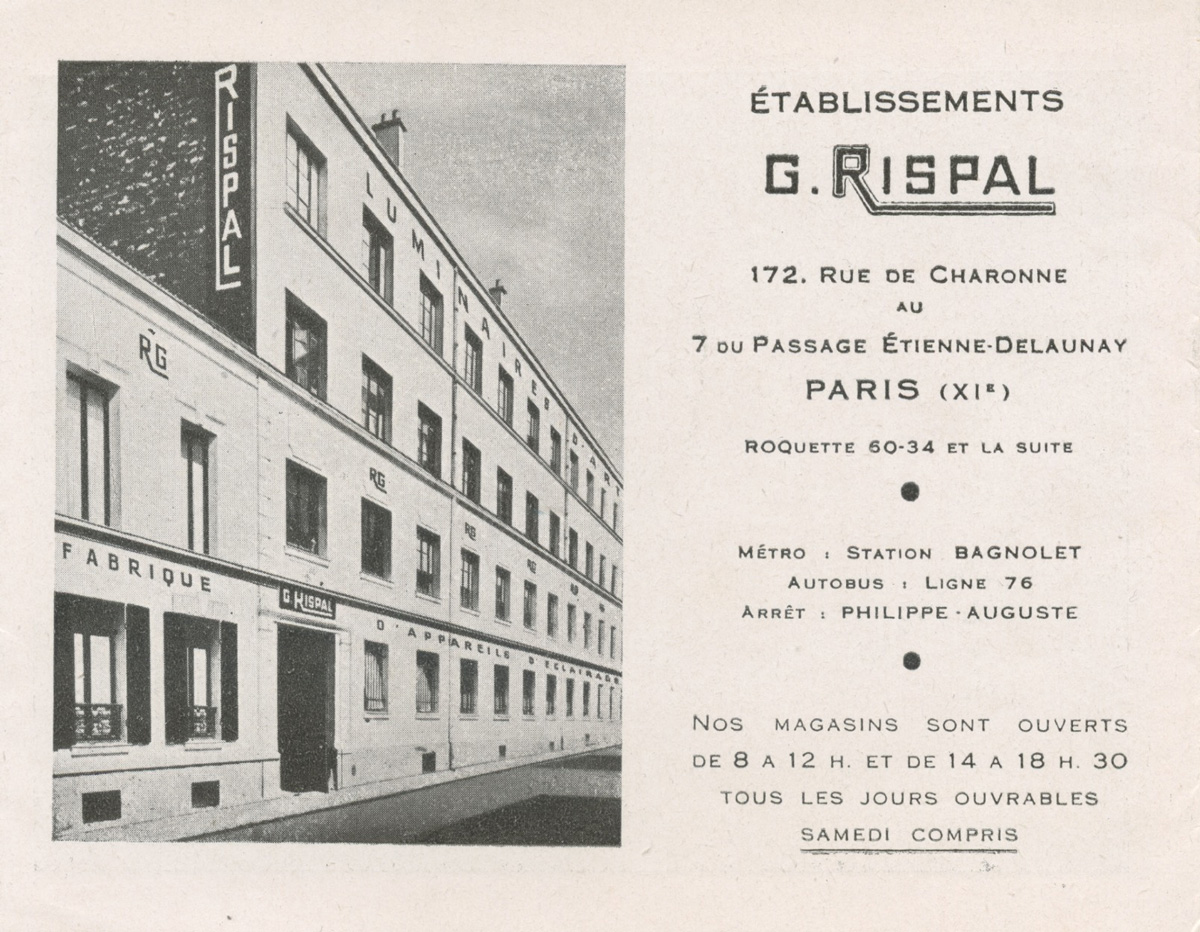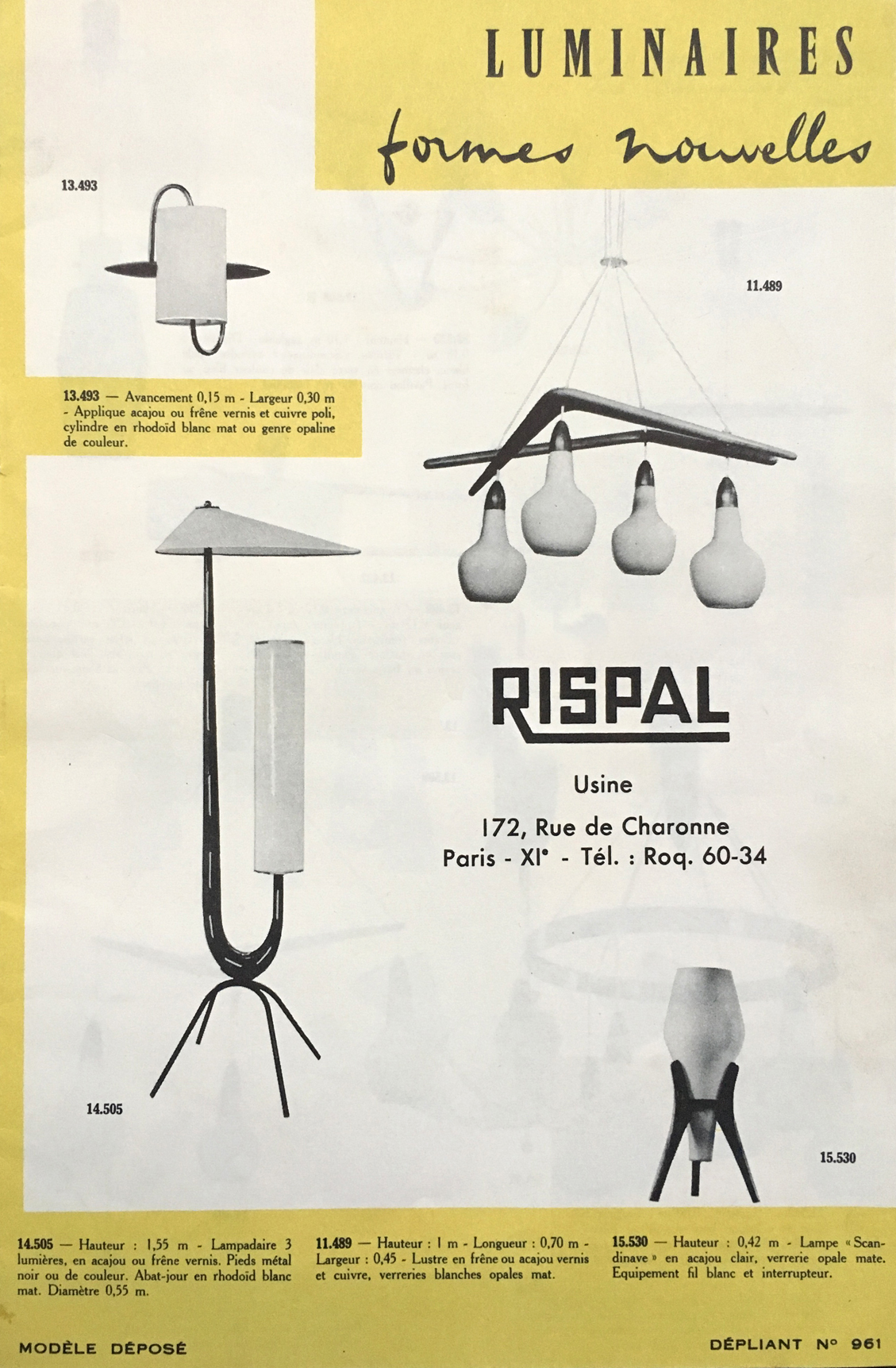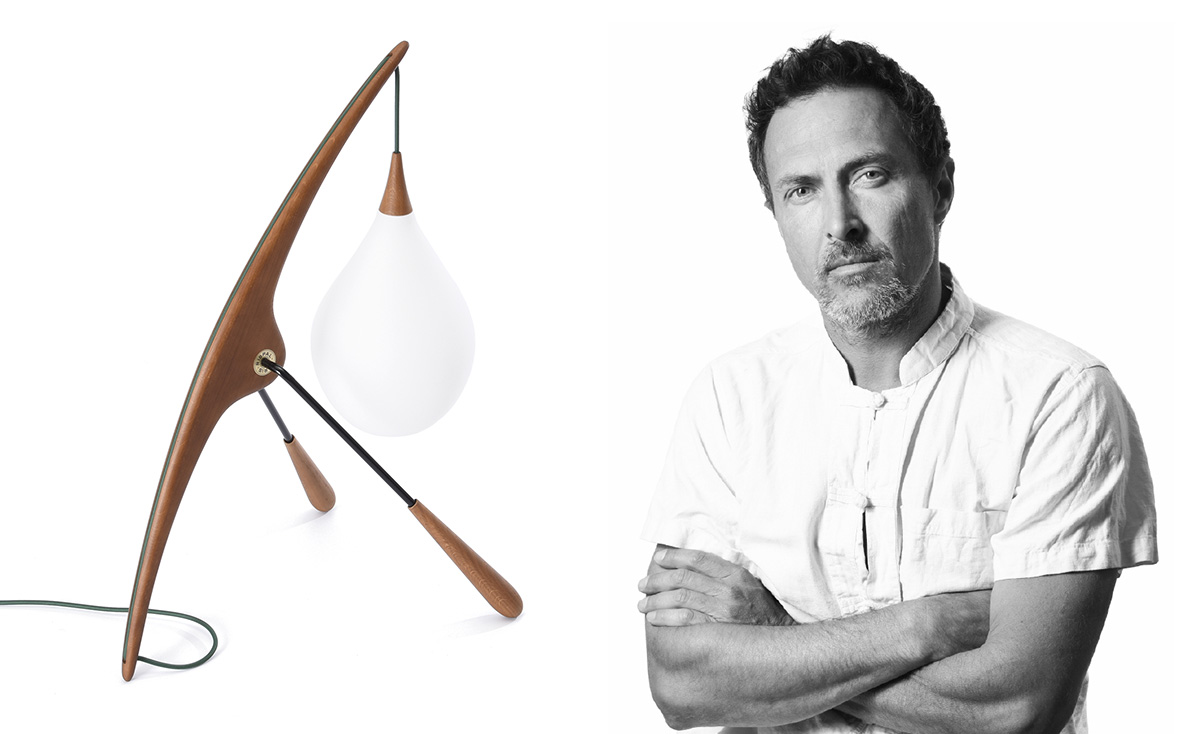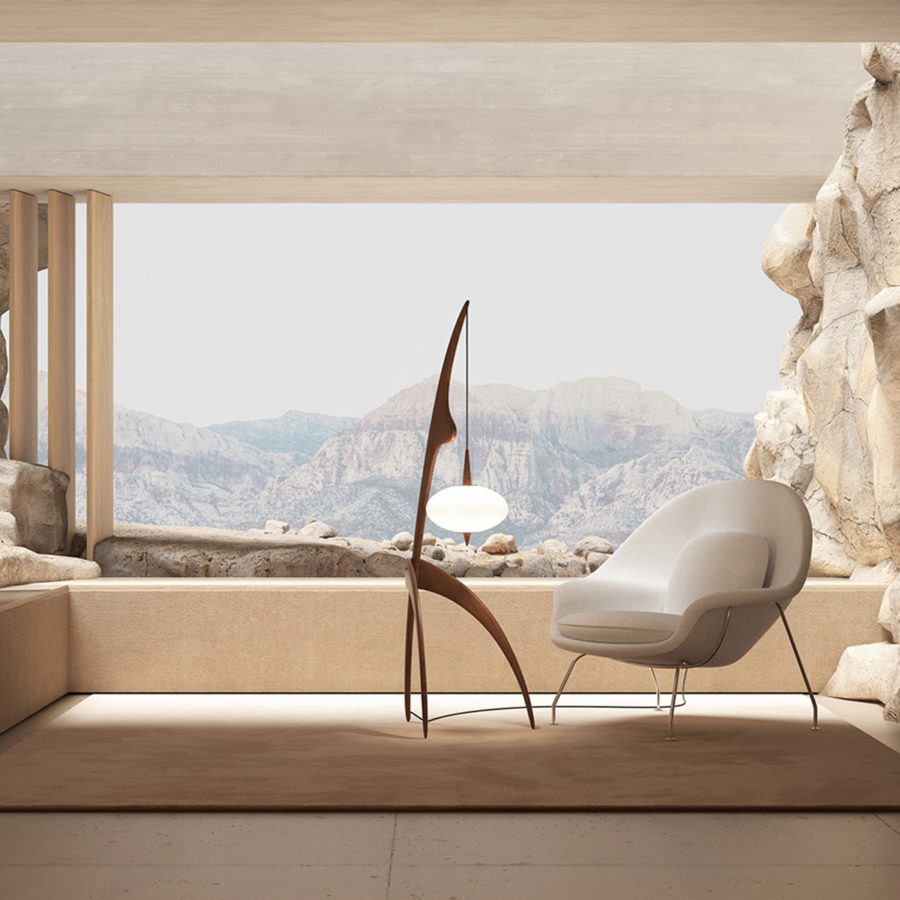Rispal’s mystery
We know very little about the creator of Rispal.
The son of wine merchants, he was born in Paris in 1901. In 1924, he founded his company in the 11th arrondissement of the capital, at 172, rue de Charonne. Its activity ceased in 1982.
















